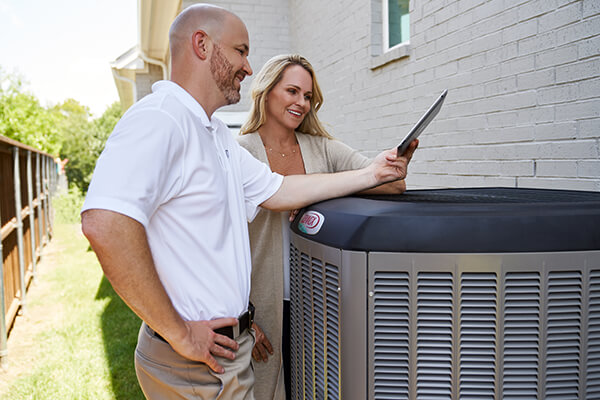August 15, 2022

7 Ways To Eliminate Drafts in Your Home
Drafts can make your living space feel quite uncomfortable. Cold air can enter your house through different areas such as the doors, windows, fireplaces, electrical boxes, recess lighting, and pot lights. The first step to eliminating drafts in your residence is to locate the air leak areas. Although you may see air leakage areas and feel drafts around doors and windows on your main floor, the major air leakages are found in the basement or the attic, which are usually hidden.
Drafts will force your heating unit to overwork to maintain the desired indoor temperatures, increasing energy bills. According to the US Department of Energy, you can save between 5% and 30% on energy costs by reducing or eliminating drafts in your residence. Below are proven ways you can implement to eliminate drafts and prevent heat loss in your house.
1. Check Your Windows
One of the most important steps in stopping drafts is inspecting your home’s windows. According to the US Department of Energy, summer heat gain and winter heat loss through windows is responsible for around 30% of cooling and heating energy usage in many American homes. Generally, windows have a big impact on your energy bills and comfort. Therefore, it pays a lot to ensure they’re draft free.
Check all your windows for any openings or cracks. If the windows are in great condition but have few drafty spots, use caulk to seal the small cracks between your wall and the windows. However, if it’s time to upgrade to new, energy-efficient windows, consider investing in vinyl windows. These windows are among the best replacements since they are more economical than wooden windows. Besides, they provide air-tight seals that their wood counterparts cannot match.
2. Seal Your Basement
Crawl places and basements can also be sources of air leaks and drafts. Sealing holes and cracks in these places can help reduce drafts and prevent cold floors. You can use expandable spray foam to insulate and a weather seal around your basement doors and windows. Not only will the spray foam prevent the warping and bowing of your doors and window frames, but it can also act as a pest blocker.
Utilize silicone caulk to seal all the openings and cracks in your basement walls, including any openings around dryer vents, gas pipes, electrical lines, air ducts, water pipes, and wiring that passes to your home’s exterior wall. If you plan to renovate your basement, that’s a perfect opportunity to look for any evidence of excessive moisture and locate and address the draft points in the space. You want to ensure your basement is free of excessive moisture and air leaks before spending a lot of cash on a completed basement.
3. Seal Pot Lights or Recessed Lights
When you install pot lights or recessed lights on the top floor of your home, you’ll need to cut some holes into the ceiling, which can create penetration into your attic space. Generally, the attic is a cold zone, and the temperatures in the space should be the same as the outdoor air. If there’s insufficient insulation around the pot lights, heated air will escape into your attic. Therefore, it’s important to ensure there’s a vapor barrier in your attic that’s properly tuck taped to cover the area around the pot light to the original vapor barrier that you initially cut.
4. Insulate Your Electrical Boxes
Electrical boxes for phone junctions, wall switches, outlets, and other devices can also add to your energy costs. Although you may not feel it, these electrical boxes are spots where you may be losing heated air to the outdoors during the wet season and conditioned air during the cooling months. If your ceiling or walls have proper insulation, the insulation may have been cut away to create room for your electrical boxes, meaning these areas become channels for air to escape or pass through. But, if your walls have no insulation or inadequate insulation, the air circulating inside the walls will find a perfect conduit into your living space via the cutouts or plaster of the electrical box. The pathway can become a source of heat loss in winter and indoor heat gain in summer.
Luckily, correcting the issue is not difficult. You only need to add insulation where you can and seal gaps around your electrical boxes. According to experts, there are three major methods for insulating these boxes. You can use spray foam or rigid foam to add insulation between the outside wall and the back of your electrical box. Installing neoprene foam gaskets over the electrical boxes right behind the cover plates can also help seal all gaps around the boxes. The cover plates have cutouts for the switches and receptacles, and when you reinstall them, the gasket creates a tight seal around the whole opening.
5. Replace Weatherstripping Around Your Doors
Weatherstripping creates an air-tight seal between a wall and a door. However, weather elements such as rain and rain can break down the weatherstripping with time, leaving you with annoying drafts. If you can see the sunlight or feel cool through your door, it’s time to replace your weatherstripping. This project often involves scraping or peeling away old weatherstripping around your doors and installing a new one.
6. Install Door Sweeps
While inspecting and replacing the door weatherstripping, consider replacing the door sweep. If air is entering through the area where the door joins the threshold, installing a door sweep might be the solution. Door sweeps are additions to the bottoms of your doors and can provide insulation and stop drafts. These strips are made from plastic, metal, rubber, or wood. Generally, a door sweep comprises two parts: a cover and a base. The cover is the portion that covers the open gap, while the base is usually attached to the door’s bottom edge. When adding the door sweep, ensure it is flush with your door’s threshold bevel. This way, the sweep will not drag along your floor.
7. Insulate Your Fireplace
The dampers inside chimneys keep cold air out, but since they are normally made from cast iron, they don’t completely keep the cold away. One of the best ways to prevent drafts in your fireplace is to insert thick foam insulation covered with decorative fabric at the opening, especially when you are not using the fireplace.
Contact the Professionals Today!
Drafts can significantly add to your home’s heating bills and make your living space feel extremely cold and unwelcoming. The good news is that you can make your residence warm and comfortable again by insulating electrical boxes, caulking your windows, sealing the basement, replacing weatherstripping around all the doors, installing a door sweep, and insulating your fireplace. If drafts are driving your energy bills up and leaving your family shivering, our professionals from Scott-Lee Heating Company can help you stop them in their tracks. Our experts will inspect your home and recommend relevant solutions to make your living space feel cozy again.
We also offer cooling, heating, air quality, ductless mini splits, and new construction services to the residents of St. Louis, MO, and the surrounding regions. Contact us today to learn more about eliminating drafts in your home or order any of our services.
